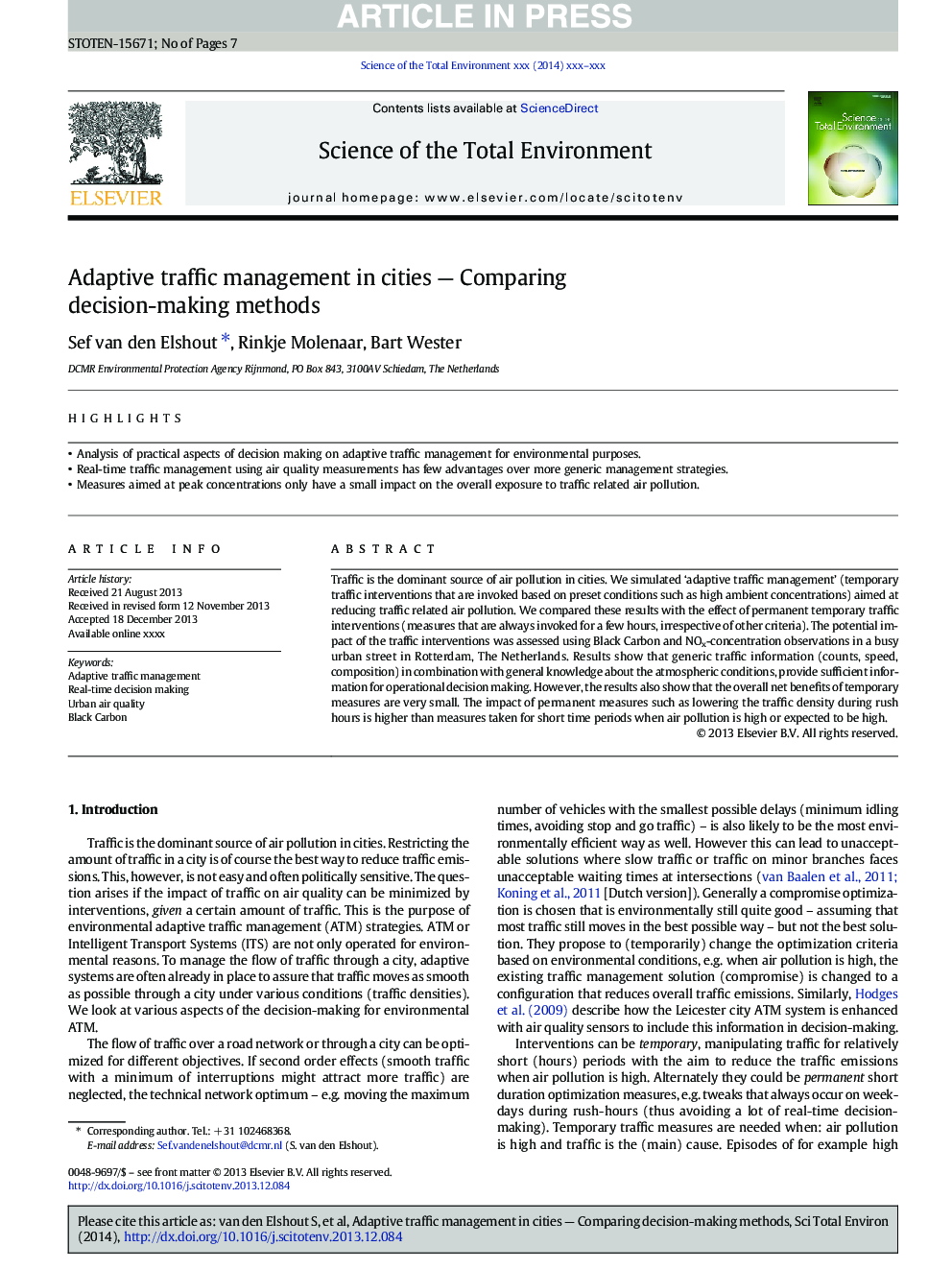| Article ID | Journal | Published Year | Pages | File Type |
|---|---|---|---|---|
| 6330212 | Science of The Total Environment | 2014 | 7 Pages |
Abstract
Traffic is the dominant source of air pollution in cities. We simulated 'adaptive traffic management' (temporary traffic interventions that are invoked based on preset conditions such as high ambient concentrations) aimed at reducing traffic related air pollution. We compared these results with the effect of permanent temporary traffic interventions (measures that are always invoked for a few hours, irrespective of other criteria). The potential impact of the traffic interventions was assessed using Black Carbon and NOx-concentration observations in a busy urban street in Rotterdam, The Netherlands. Results show that generic traffic information (counts, speed, composition) in combination with general knowledge about the atmospheric conditions, provide sufficient information for operational decision making. However, the results also show that the overall net benefits of temporary measures are very small. The impact of permanent measures such as lowering the traffic density during rush hours is higher than measures taken for short time periods when air pollution is high or expected to be high.
Related Topics
Life Sciences
Environmental Science
Environmental Chemistry
Authors
Sef van den Elshout, Rinkje Molenaar, Bart Wester,
